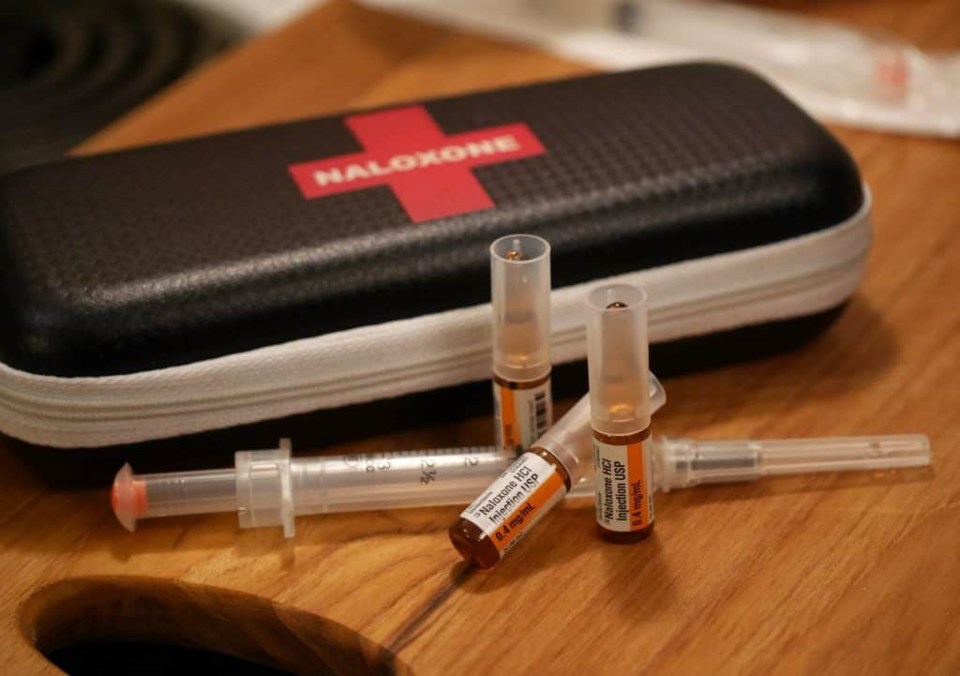Cochranites have become accustomed to reading or hearing the familiar descriptive, “The Fastest Growing Town in Alberta,” often coming from proponents of continued rapid growth and development.
This week Cochrane made a less desirable Top Ten list, one which surprised and concerned many.
Alberta RCMP responded to twice as many suspected drug overdoses between January and November 2023 than in all of 2022.
The communities with the highest total fentanyl overdoses as recorded by the RCMP were Red Deer, Lloydminster, Parkland County, Fort McMurray, Strathcona County, Gleichen, Cochrane, Wetaskiwin, and Mascwacis. With the exceptions of the Hamlet of Gleichen and Mascwacis, these same communities also had the highest number of drug poisoning deaths responded to by Alberta RCMP.
The stats regarding Cochrane are specific to the detachment area that Cochrane polices, so that encompasses Springbank, Bearspaw as well as the Stony Nakota First Nation.
Cpl. Troy Savinkoff spent 12 years working out of the Cochrane detachment and now does media relations for the RCMP. He is familiar with the community.
He said people can’t assume that their town is immune from opioid addictions – no matter which town it is.
“It’s one of those things. We have to understand that this addiction is everywhere,” Savinkoff said.
But to see overdoses more than double is particularly troubling.
“That’s obviously a very significant increase, and in a lot of those communities we are policing, we are seeing the effects of that increase,” he said.
The rising overdose rates take a toll on police, as quite often there are associated increases in crime rates, Savinkoff said. And each case has to be investigated and processed, which translates into a significant strain on resources.
Savinkoff said that police have seen the harmful effects alcohol and other drugs can have on people for years. But the fentanyl problem is much more devastating.
“Fentanyl seems to have tipped the scales in terms of dangers and effects it can have on a person,” he said.
Of the 1026 suspected overdoses RCMP responded to so far this year, 517 were reported by just ten detachments, more than all provincial detachments combined in 2022, according to data from Alberta RCMP.
Data also suggests that fatal overdoses are happening more often. About a third of these suspected drug poisonings resulted in death, and many were related to the practice of cutting fentanyl with other substances, an RCMP news release said. The unknown combination and potency of these mixtures sold as fentanyl can make a user's normal dose more dangerous and reduce the effectiveness of naloxone.
Naloxone is a fast-acting drug used to temporarily reverse the effects of opioid overdoses.
"It's really important to recognize that this crisis is spreading throughout every community in Alberta. There's nowhere that's immune to it," said Euan Thomson, who leads Each+Every, a coalition of businesses advocating to reduce preventable drug poisoning deaths.
"Every single community has drug use. And that means every single community has unregulated drug use, which is really the root of the toxicity crisis here that RCMP is responding to, that EMS is responding to, and that frontline outreach workers are having to deal with."
Alberta RCMP also had a 24 percent increase in the number of naloxone deployments in response to overdoses in 2023.
Furthermore, from January to August 2023, there were 1262 opioid related deaths in Alberta, which is up by 255 compared to the same time period in 2022.
Many of these overdoses appear to be tied to the dangerous practice of cutting Fentanyl. In order to create a cheaper high, Fentanyl is being mixed with other substances that are easier and cheaper to access. A side effect of this mixing is that it reduces the effectiveness of naloxone, meaning more doses are needed in order to save someone's life, if it works at all.
The Alberta RCMP is issuing a warning to the public, reminding them that street drugs are not always what they appear to be. Furthermore, drugs marketed as fentanyl (sometimes pink, blue, red, purple or containing a mixture of these colors) may in fact be a mixture of unknown potency and characteristics, making a user's "normal dose" potentially more dangerous. The increase in overdoses, and the possible resistance to naloxone, suggest that fatal overdoses may occur more often.
The Alberta RCMP remind the public that the signs of a fentanyl overdose include slow, irregular and shallow breathing, pinpoint pupils, muscle stiffness, seizures and unconsciousness. Alberta RCMP also want to remind the public of these safe practices to follow if you are going to use illicit drugs:
- Avoid using while alone.
- Ask someone to check on you or use while on the phone with a trusted person able to call for assistance in the event of an overdose.
- Know the signs and symptoms of poisoning/overdose and call 911 for direction and support.
- Carry a naloxone kit and know how to use it to respond to a suspected opioid poisoning/overdose.
- Consider using the Digital Overdose Response System app when consuming drugs.
For anyone seeking help, the Virtual Opioid Dependency Program can assist members of the public who struggle with addiction issues and wish to safely change their life habits and live healthy lives. This service also offers information to family and friends. For more information, contact the addiction helpline at 1-866-332-2322.
Anyone with information about illegal activity regarding fentanyl or any other drug, is asked to contact local police or Crime Stoppers at 1-800-222-8477 (TIPS), online at www.P3Tips.com or by using the "P3 Tips" app available through the Apple App or Google Play store.
To report crime online, or for access to RCMP news and information, download the Alberta RCMP app through Apple or Google Play.
-With a files from Brett McKay/ Local Journalism Initiative Reporteer




